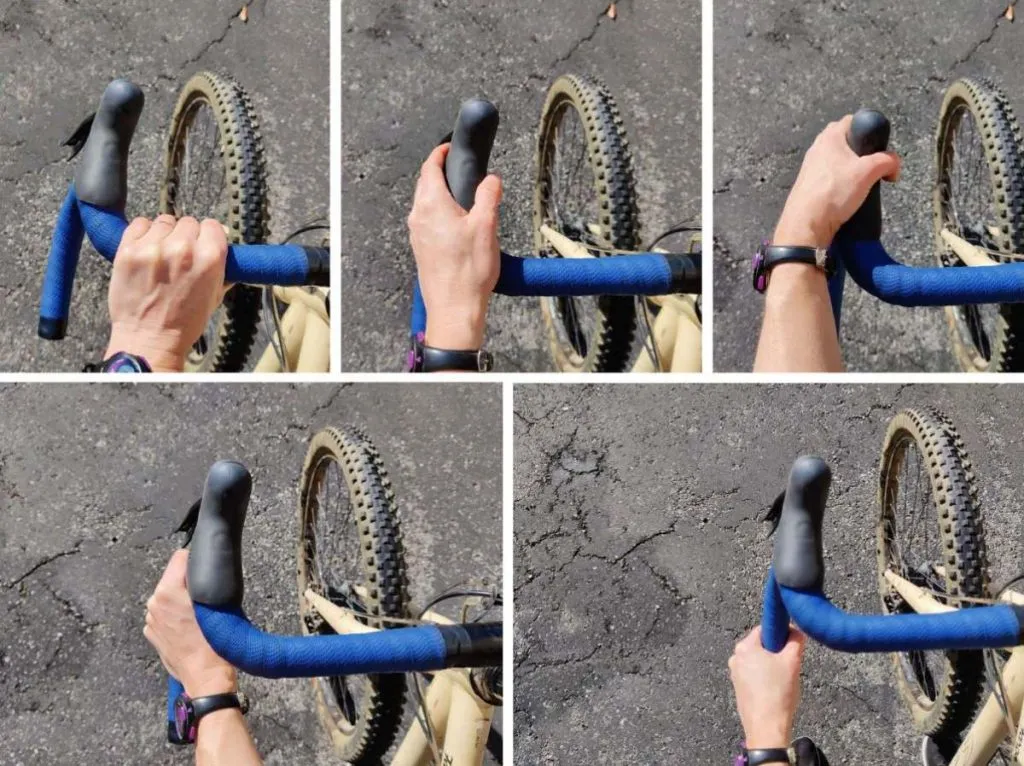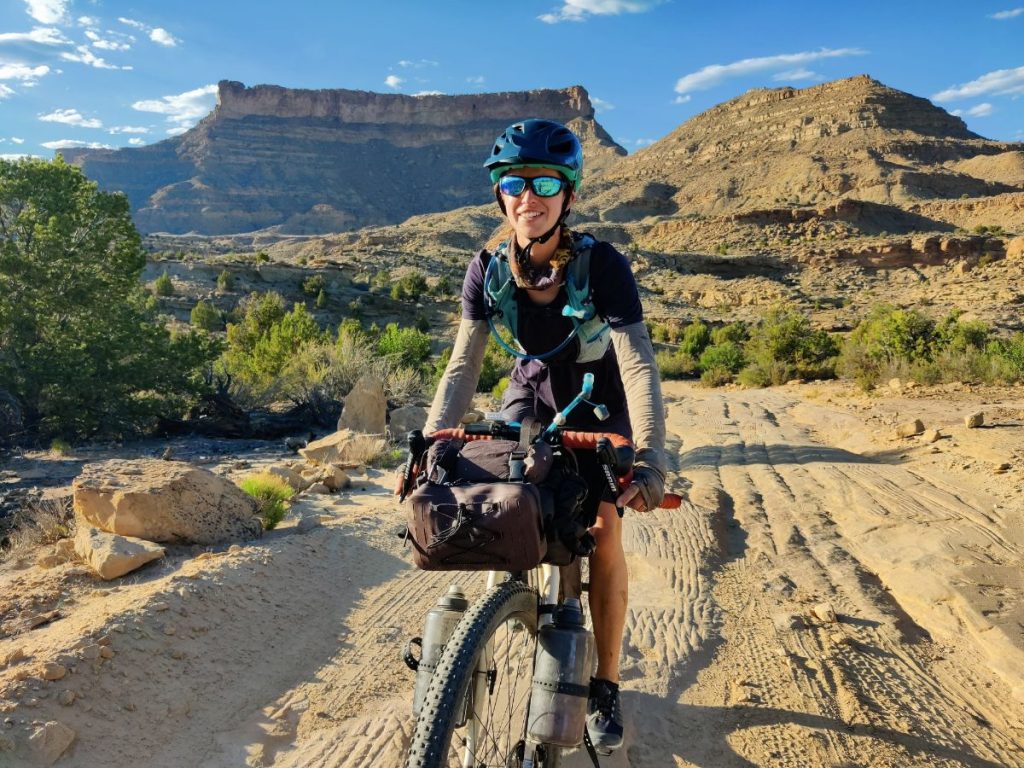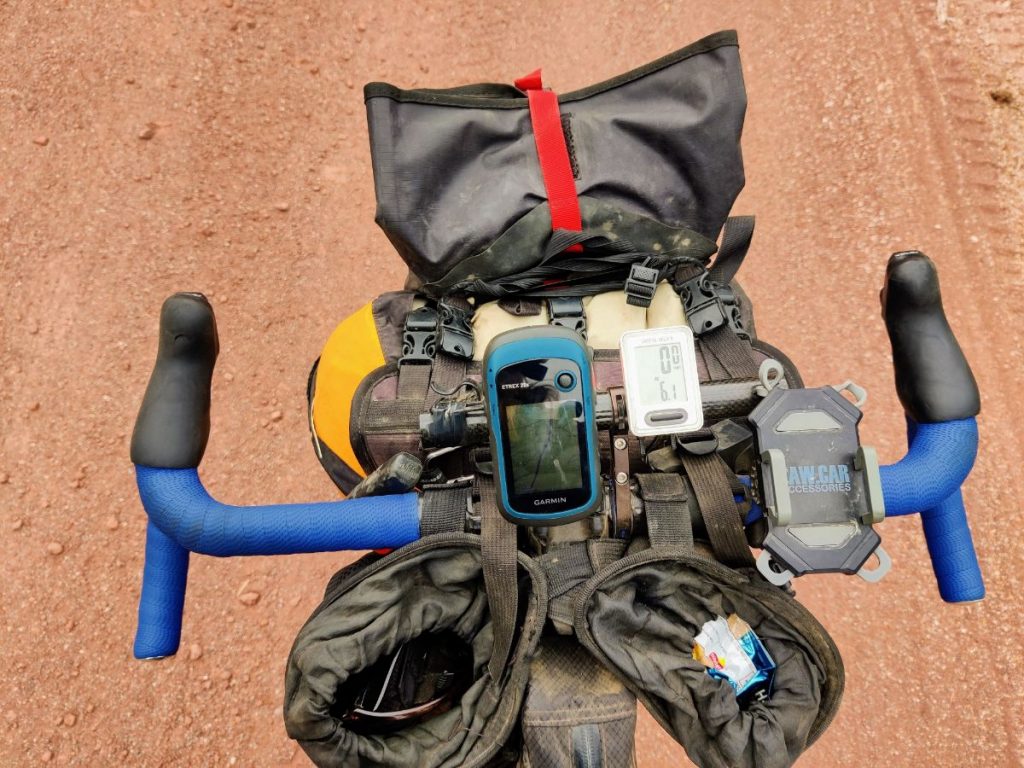Bikepacking With Drop Handlebars
Traditionally, drop handlebars were mainly for road bikes. Their narrower and lower grip encourages an aerodynamic position that maximizes speed, something bikepackers don’t usually care about.
Yet today, many people do bikepack with drop bars thanks to modern trends. When gravel bikes took off, so did wide flared drop bars that offer more stability and comfort for all-day rougher riding. Now you can even find drop bars on some mountain bikes, albeit at the tamer end of the MTB spectrum.
Two popular examples of bikepacking-friendly drop bars are the Salsa Cowchipper and PNW Coast Bar. I’ve bikepacked thousands of miles with each and find them very comfortable. They are wide, flared, and fairly shallow, all of which help with comfort and stability. If this type of handlebar is new to you, see my article comparing Salsa’s flared drop bars for an intro.
Bars like the Cowchipper and Coast do their best to offer the advantages of drop bars while minimizing the drawbacks. Read on for the most important tradeoffs in the context of bikepacking specifically.
Advantage: More Hand Positions
When riding all day, stuff gets tired. For some people, alternating between upright and forward postures (in other words, switching grip between the hoods and drops) helps stave off muscle fatigue and nerve issues. The externally rotated hand position also solves some problems with hand numbness and tingling.
If you aren’t riding a lot of rough or technical terrain and you find drop bars more comfortable, there’s little reason to not choose drop bars.

The five common hand positions on drop bars. (Top row: tops, ramps, hoods. Bottom row: hooks, drops)
Disadvantage: Less Stability
The main drawback of drop bars for bikepacking: they’re less stable and confidence-inspiring on rugged terrain. This isn’t to say you can’t ride singletrack or chunky jeep road with drops, because you certainly can (and many do). But if you love more technical riding and aren’t into underbiking, drop bars probably aren’t the best choice for you.
I say this from experience: I bikepacked many thousands of miles with gravel-style drop bars and got through everything I needed to get through. But I only started making real progress in my mountain biking skills when I switched to a flat bar bike.

Me bikepacking in Utah on a rough dirt road with drop handlebars.
Disadvantage: Less Space for Cargo
In the puzzle of loading a bikepacking bike, handlebar space is key real estate.
The good news: Most handlebar bags and harnesses work on drop bars, especially wider gravel-style drops.
The bad news: Space is limited. You’ll have to roll up your dry bag shorter and can’t get into the ends as easily. You might need a bikepacking-specific tent with short poles.
Tip: When I bikepack with drop bars I usually put a compression sack like this in my handlebar harness to make the best use of limited space. When using flat bars, on the other hand, I prefer a wider dry bag with openings on both ends for easy access.
Related: Revelate Handlebar Harness Review (Both Drop and Flat Bars)

Here I’m using a compression dry bag in my handlebar harness to help my sleeping bag fit between my drop bars.
Disadvantage: Less Space for Gadgets
Bikepackers tend to load up our bars with gadgets: phone holders, GPS devices, bike computers, headlights… When combined with the straps from handlebar bags and stem bags, space is at a premium! Most drop bar cockpits simply don’t have room for all these items at once.
To solve this problem I highly recommend picking up one of these inexpensive and very useful bar extenders. I rarely bikepack without one on my drop bars. You can see it in the picture just above.
 CampingSurvivalistHuntingFishingExploringHikingPrivacy PolicyTerms And Conditions
CampingSurvivalistHuntingFishingExploringHikingPrivacy PolicyTerms And Conditions
